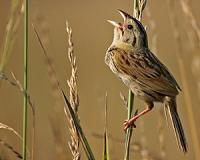 |
Champaign IL (SPX) Jan 11, 2011 Using detailed land analysis, Illinois researchers have found that biofuel crops cultivated on available land could produce up to half of the world's current fuel consumption - without affecting food crops or pastureland. Published in the journal Environmental Science and Technology, the study led by civil and environmental engineering professor Ximing Cai identified land around the globe available to produce grass crops for biofuels, with minimal impact on agriculture or the environment. Many studies on biofuel crop viability focus on biomass yield, or how productive a crop can be regionally. There has been relatively little research on land availability, one of the key constraints of biofuel development. Of special concern is whether the world could even produce enough biofuel to meet demand without compromising food production. "The questions we're trying to address are, what kind of land could be used for biofuel crops? If we have land, where is it, and what is the current land cover?" Cai said. Cai's team assessed land availability from a physical perspective - focusing on soil properties, soil quality, land slope, and regional climate. The researchers collected data on soil, topography, climate and current land use from some of the best data sources available, including remote sensing maps. The critical concept of the Illinois study was that only marginal land would be considered for biofuel crops. Marginal land refers to land with low inherent productivity, that has been abandoned or degraded, or is of low quality for agricultural uses. In focusing on marginal land, the researchers rule out current crop land, pasture land, and forests. They also assume that any biofuel crops would be watered by rainfall and not irrigation, so no water would have to be diverted from agricultural land. Using fuzzy logic modeling, a technique to address uncertainty and ambiguity in analysis, the researchers considered multiple scenarios for land availability. First, they considered only idle land and vegetation land with marginal productivity; for the second scenario, they added degraded or low-quality cropland. For the second scenario, they estimated 702 million hectares of land available for second-generation biofuel crops, such as switchgrass or miscanthus. The researchers then expanded their sights to marginal grassland. A class of biofuel crops called low-impact high-diversity (LIHD) perennial grasses could produce bioenergy while maintaining grassland. While they have a lower ethanol yield than grasses such as miscanthus or switchgrass, LIHD grasses have minimal environmental impact and are similar to grassland's natural land cover. Adding LIHD crops grown on marginal grassland to the marginal cropland estimate from earlier scenarios nearly doubled the estimated land area to 1,107 million hectares globally, even after subtracting possible pasture land - an area that would produce 26 to 56 percent of the world's current liquid fuel consumption. Next, the team plans to study the possible effect of climate change on land use and availability. "Based on the historical data, we now have an estimation for current land use, but climate may change in the near future as a result of the increase in greenhouse gas emissions, which will have effect on the land availability," said graduate student Xiao Zhang, a co-author of the paper. Former postdoctoral fellow Dingbao Wang, now at the University of Central Florida, also co-wrote the paper. "We hope this will provide a physical basis for future research," Cai said. "For example, agricultural economists could use the dataset to do some research with the impact of institutions, community acceptance and so on, or some impact on the market. We want to provide a start so others can use our research data." The Energy Biosciences Institute at U. of I. and the National Science Foundation supported the study.
Share This Article With Planet Earth
Related Links - Bio Fuel Technology and Application News
 Biofuel Grasslands Better For Birds Than Ethanol Staple Corn
Biofuel Grasslands Better For Birds Than Ethanol Staple CornEast Lansing MI (SPX) Jan 10, 2011 Developing biofuel from native perennials instead of corn in the Midwest's rolling grasslands would better protect threatened bird populations, Michigan State University research suggests. Federal mandates and market forces both are expected to promote rising biofuel production, MSU biologist Bruce Robertson says, but the environmental consequences of turning more acreage over to row crops ... read more |
|
| The content herein, unless otherwise known to be public domain, are Copyright 1995-2010 - SpaceDaily. AFP and UPI Wire Stories are copyright Agence France-Presse and United Press International. ESA Portal Reports are copyright European Space Agency. All NASA sourced material is public domain. Additional copyrights may apply in whole or part to other bona fide parties. Advertising does not imply endorsement,agreement or approval of any opinions, statements or information provided by SpaceDaily on any Web page published or hosted by SpaceDaily. Privacy Statement |